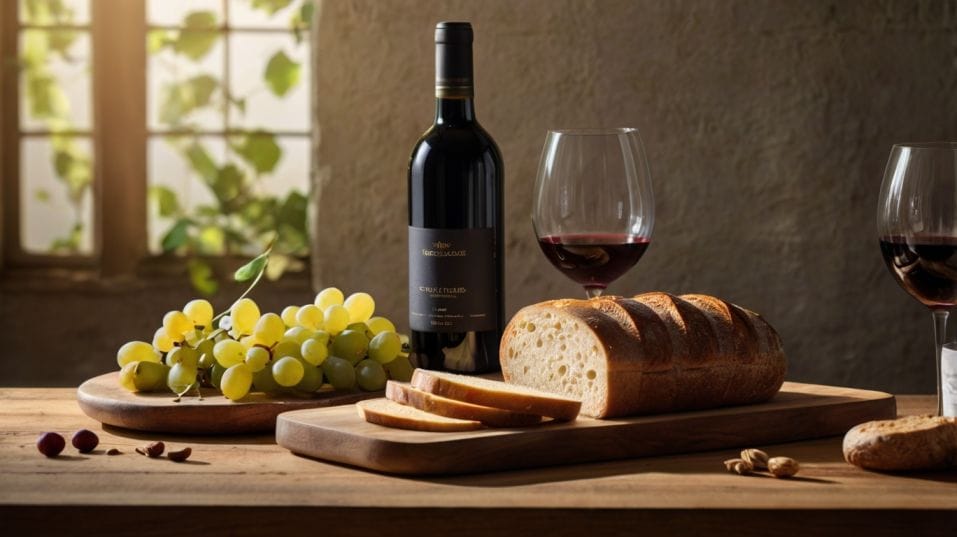What to Serve When You Don’t Know Their Taste
Not sure what wine to serve guests? Learn how to pick, pour, and enjoy versatile bottles that work—even if you don’t know their taste.

Ever stared at your wine rack before guests arrive and thought, What if they hate it? You’re not alone. Picking a bottle when you don’t know someone’s taste can feel like a gamble—but it doesn’t have to.
Forget trying to impress. The secret is choosing a wine that’s welcoming, balanced, and adaptable. With a few smart moves, you can serve something that fits almost any palate—and makes everyone feel like they belong.
Aim for Balance, Not Boldness
When you're unsure of someone’s taste, extremes are your enemy. Wines that lean hard into tannin, sweetness, or acidity might impress enthusiasts, but they often divide a mixed crowd.
Instead of trying to wow, choose wines that feel composed—where fruit, acid, and body are in quiet agreement.
These wines don’t need to be boring. They just need to be balanced. That’s what makes them versatile. A Loire Valley Cabernet Franc has savory energy without heaviness.
A restrained Chardonnay (especially unoaked) offers richness without weight. Even a well-made Lambrusco—light fizz, red fruit, dry finish—can surprise people in the best way.
Think of these wines as conversationalists, not performers. They don’t interrupt. They participate.
Know the Wines That Keep You Safe
Some styles live comfortably in the middle—neither too light nor too rich, too sharp nor too soft. They may not be everyone’s favorite, but they rarely miss entirely. Here are a few categories that quietly earn their keep in these moments:

Chillable reds
Gamay, Schiava, or light Pinot Noir: low in tannin, bright with fruit, great with or without food.
Dry rosé
Provence-style or similar: clean, crisp, and socially disarming.
Textured whites
Albariño, Grüner Veltliner, or Muscadet: refreshing, subtle, and often more food-friendly than expected.
Sparkling wines
Cava, Crémant, or dry Lambrusco: acidity and bubbles do a lot of work in making wine feel celebratory, without polarizing flavors.
These styles don’t chase trends. They’re built on structure, balance, and function—qualities that resonate even if no one at the table can name them.
Let the Food Guide You
You don’t need a full pairing strategy, but letting the menu shape your wine choices is smarter than trying to decode personal preference. If the food is rich or creamy, you want acidity in your wine to refresh the palate.
If it’s salty, lean wines with a crisp edge will shine. Spicy? Look for low-alcohol reds or slightly off-dry whites—heat amplifies alcohol, and that clash can ruin a glass.
When in doubt, serve wines that can stretch across multiple dishes. You don’t know who’s skipping meat or avoiding dairy. You don’t need a wine for every plate. You need one that plays well with most.
Texture Over Tasting Notes
Forget chasing “raspberry and rose petal.” Most people—especially those who don’t drink wine often—aren’t tuned in to those flavor signals. But everyone notices texture. Is it smooth? Sharp? Heavy? Gritty?
Texture tells a faster story than flavor. It’s more universal. And often, it’s what makes someone like or dislike a wine—whether they can explain it or not.
Pay attention to wines with a round mouthfeel, gentle acidity, and a clean finish. A soft entry pulls people in. A drying finish pushes them away. Serve wines that glide, not wines that grip.
This is why lightly chilled reds and textured whites work so well: their feel is easy, their structure is subtle, and they’re not trying too hard to be “interesting.”
Don’t Pour Too Much, Too Soon
You can serve a great wine and still miss the mark if you serve it wrong. Temperature matters. Glassware matters. Pour size matters more than you think.
Red wines too warm lose precision—they taste flabby. Whites too cold go mute—you miss all the nuance. Ideally, red wines should be just cool to the touch (think 55–60°F), and whites should come out of the fridge 10–15 minutes before pouring.
If that’s too technical, just trust your hand: if the red bottle feels room-temp, give it a short chill. If the white feels icy, let it sit.
Use glasses with enough room to swirl gently—no need for stems if that’s not your setup. Just avoid small, narrow glasses or thick tumblers.
And whatever you do, pour lightly. A modest pour signals that people are welcome to taste, to pass, to choose their pace. That freedom makes the wine feel better before they even sip.
Stay Curious, Not Controlling
Here’s the mindset shift that separates a stressed-out host from a confident one: you’re not trying to impress. You’re creating a space for someone to enjoy wine, however they want to approach it.
That means letting go of what they should like or notice. It means offering wine, not selling it. Ironically, when you remove the pressure, people pay more attention.
They feel safe being curious, asking questions, even saying, “This isn’t my favorite.” And if you’re listening—not just pouring—you’ll start to see patterns. Not just in others, but in your own palate.
Hosting this way makes you a better taster. It trains you to watch how wine behaves with food, in different glasses, at different temperatures. It sharpens your intuition without turning wine into homework.
Final Thoughts
When you don’t know someone’s taste, serve wine that’s grounded—balanced, textural, and ready to adapt. Don’t chase flavor notes. Don’t chase approval. Serve a wine that works well with food, respects the moment, and invites people in.
Keep your pours light. Keep your expectations lighter. And taste along the way—not just for your guests, but for yourself. Every time you do, you build a stronger palate and a more confident presence at the table.
Tonight, try a wine you’d usually overlook. Serve it well. Pay attention to how it feels, not just how it tastes. Add that habit—thoughtful, flexible, generous—to your wine ritual. That’s how taste becomes instinct.




